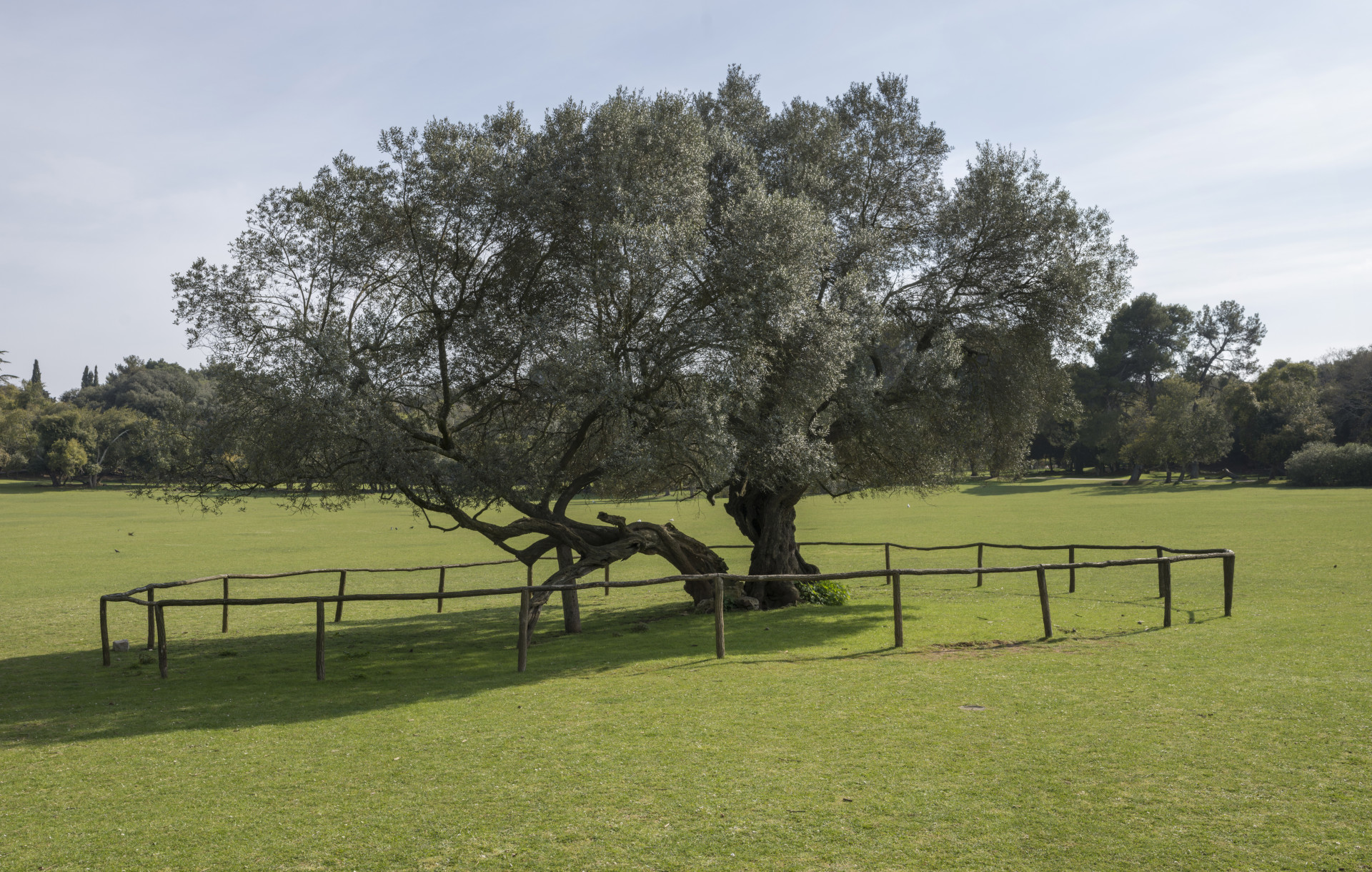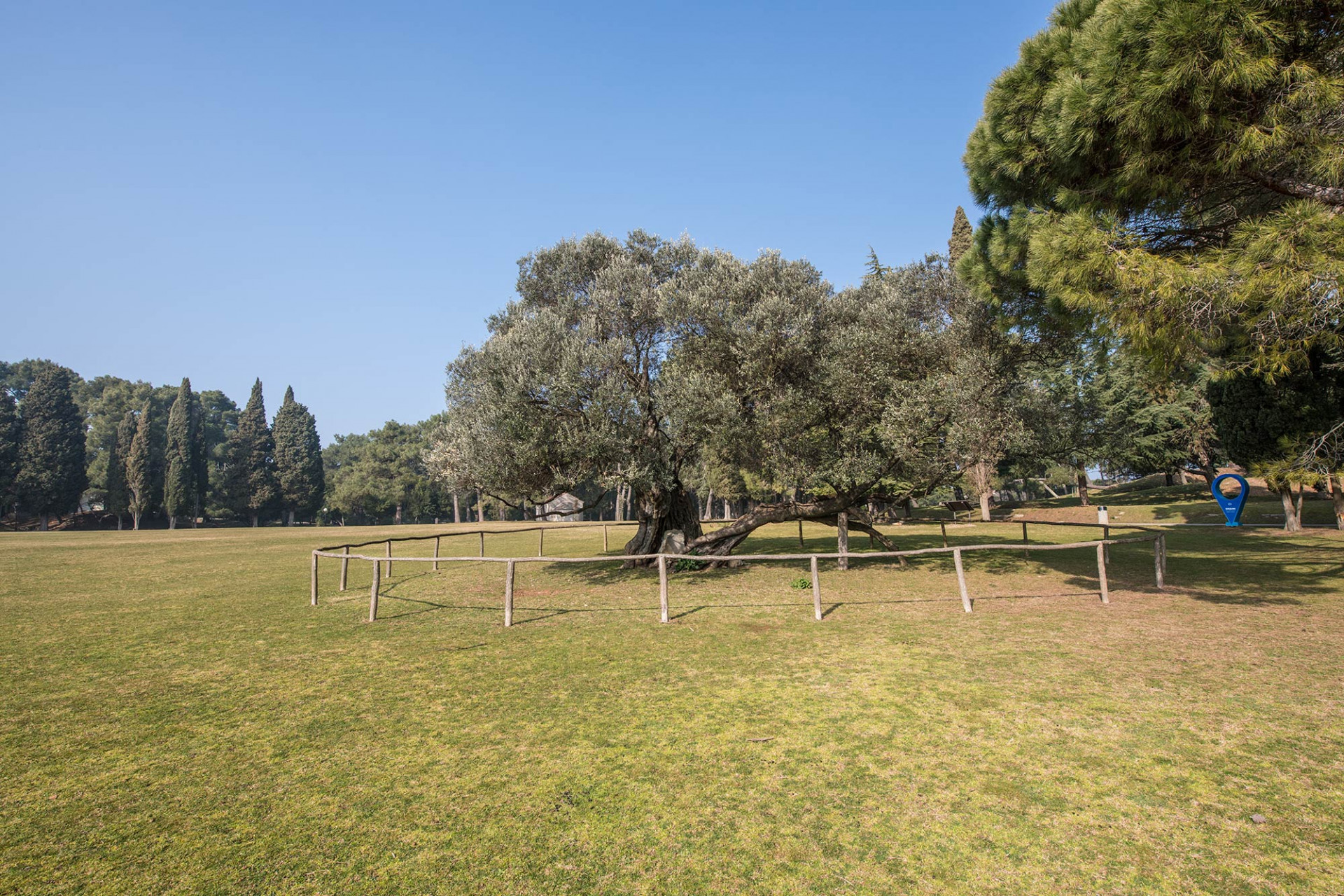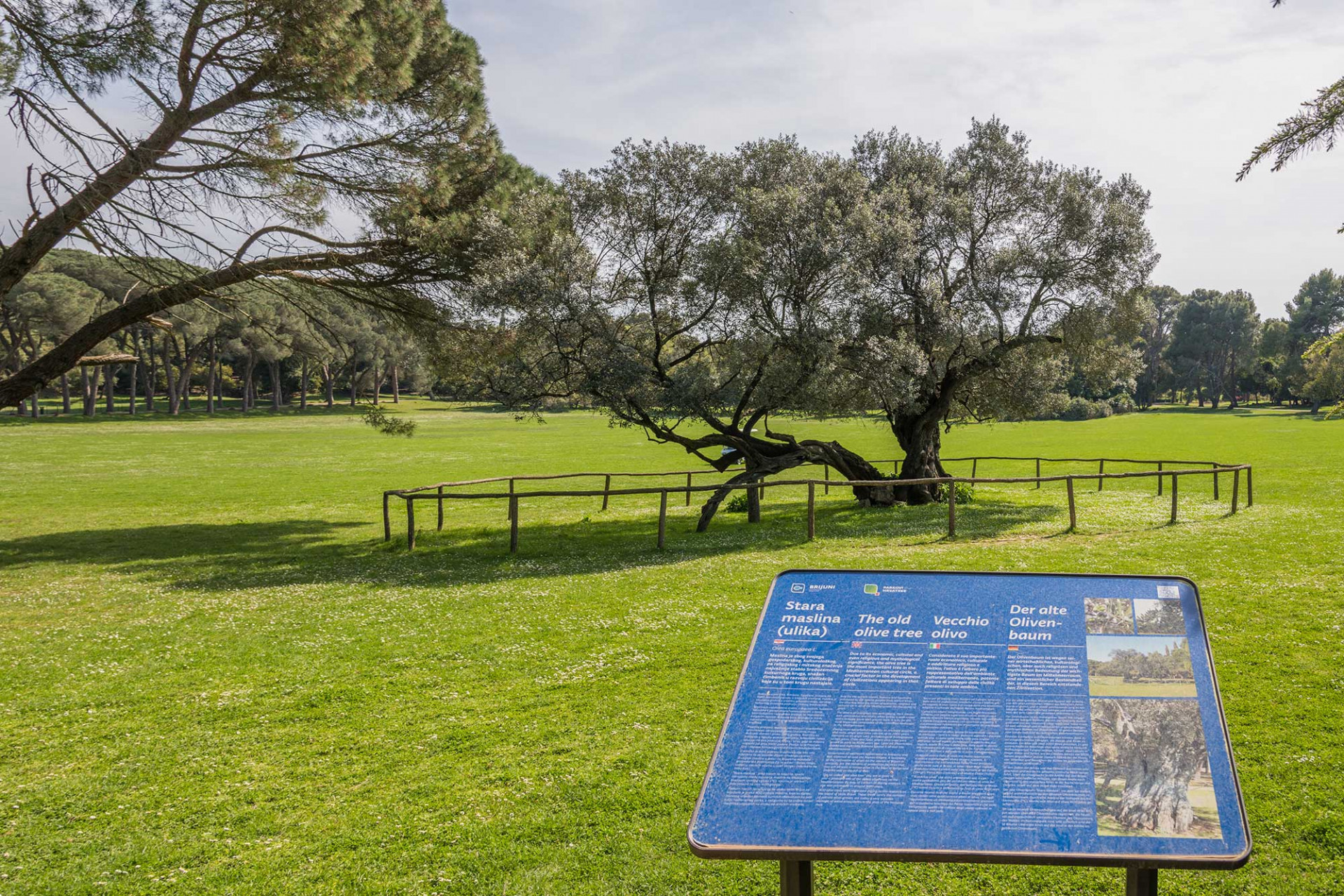The method of carbon analysis (by applying the radioactive isotope of carbon C14 on the wood sample taken from the tree trunk) showed that the olive tree is about 1600 years old.
The consequences of a great storm
During a storm in the 1970s the olive split open. The "wounds" resulting from the splitting were preserved with concrete (at that time this was a very common method of preservation in arboriculture).
The projection of the tree top is 22 x 8 meters, measuring the height of 6 meters.
Olive fruit
Even today the olive tree fructifies (bears fruit), so it is used to produce olive oil. Olives are picked in October, and on average, 30 kg of olives is collected, of which 4.1 kg of extra virgin olive oil is produced (its chemical components were tested at the laboratory of the Public Health Institute in Pula). The best chemical analysis showed 0.11% of non-saturated fatty acids, whereas the peroxide number was 1.95.
The olive tree is an integral part of Brijuni's unique landscape and, owing to its lush and rich crown, as well as the impressive size of its trunk, the tree adds to the unique view of this microlocation.
 Parks of Croatia
Parks of Croatia
 EU projects
EU projects English
English




































